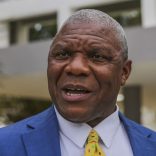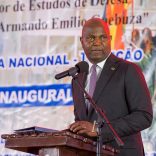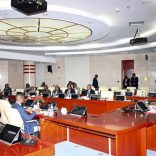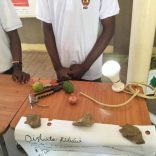Mozambique: Agriculture Minister accused of environmental crime - AIM
Mozambique: Walking the walk on election protest day

Photo: Lusa
On another day of demonstrations in Mozambique, on the outskirts of Maputo, after 8 a.m., the noise of engines was forbidden and the solution was to walk, on a morning when even police vehicles were forced to retreat.
Armando Nuvunga, 78, has just walked five kilometres after leaving Maputo’s Central Hospital, where he had a medical appointment, and now has to walk another six kilometres to his home, as cars are not allowed on the outskirts due to the demonstrations against the results of the 9 October elections in Mozambique.
“There are no chapas [passenger transport vans] or cars on the road. All the streets are like this,” Armando Nuvunga told Lusa, his face visibly tired after walking for at least an hour.
In his 78 years, Nuvunga has seen the “foundation” and the “challenges” that Mozambique has faced in 49 years of independence and says, ‘This has never happened in Maputo”, even during the 16-year civil war.
“I’ve never seen this and what surprises me most is that Venâncio Mondlane [the presidential candidate who has been calling for the demonstrations] isn’t even here, but what he says is fulfilled by the people,” said the former mine worker in South Africa, in the middle of Combatants” Square.
Like Nuvunga, thousands of people passed through Combatants’ Square today. This important point of connection between the centre of Maputo and various neighbourhoods on the outskirts was manned by demonstrators from 8 a.m. under the disinterested gaze of some police officers who usually stay in the vicinity.
“We know what our rights are, and this is one of the rights granted to us by the Constitution of the Republic. We have the right to resist illegal orders and, before the electoral truth comes, we’re not going to stop,” says Narciso Castigo, among the young people who have set up tyres at the entrance to Combatants” Square, from Lusaka Accords Avenue.
On the outskirts, on average every two kilometres, a “position” of the demonstrators was set up (with whistles and “vuvuzelas”), forcing any driver to turn off their engine in “compliance” with the instructions of the candidate they consider the winner of the 9 October elections.
“We’re going to be here on the streets until the electoral truth is restored,” Francisco Chiruque emphasised to Lusa in the middle of Acordos de Luzaka Avenue.
For the most part, everywhere in Mozambique, the revindication that marks this electoral period is led by young people, who, in addition to the argument of electoral truth, include unemployment and low schooling as motivations. According to official statistics, of the 32 million Mozambicans, a third of the approximately 9.4 million young people in the country are affected by unemployment and low schooling.
“We want revolution, change, freedom and jobs. We want the youth to be recognised,” said Jamal Muerre, speaking to Lusa in Praça dos Combatentes.
The wave of demonstrations in Mozambique, with around 70 dead and more than 200 wounded by gunfire in a month as a result of clashes with the police, has been called by Venâncio Mondlane, who is contesting the victory of Daniel Chapo in the presidential elections, with 70.67% of the votes, and, in the legislative elections, of Frelimo, which strengthened its absolute majority with 11 more deputies, totalling 195 mandates in the universe of 250 deputies that make up parliament, according to the results announced by the National Electoral Commission (CNE).
In this phase, which began on Wednesday, at least three people died, and another five were injured by gunfire in Mozambique, according to the Mozambican non-governmental organisation (NGO) Plataforma Eleitoral Decide.
On Tuesday, presidential candidate Venâncio Mondlane called on the Mozambican population to leave their cars in the streets from 8 a.m. for three days, starting on Wednesday, with election protest posters until they return from work.












Leave a Reply
Be the First to Comment!
You must be logged in to post a comment.
You must be logged in to post a comment.